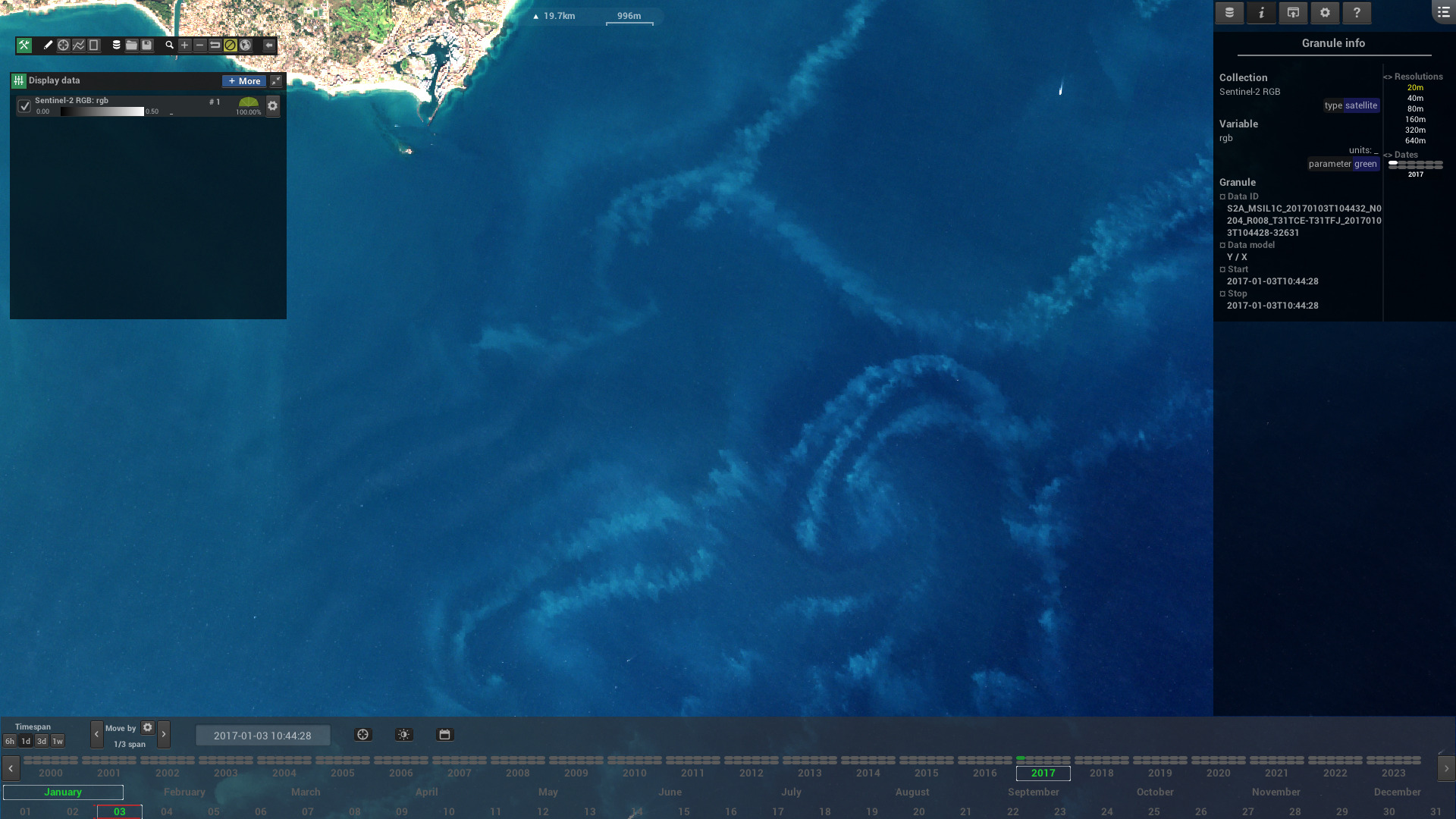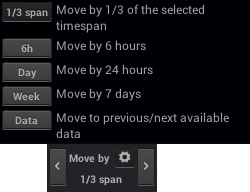New SEAScope release available
Grab the latest version of the viewer & Python bindings!
by Sylvain Herlédan
You can download the latest version of the viewer and the Python bindings on the SEAScope website.
We are always eager to get feedback from our users, so don't hesitate to let us know what you think of this new version!
You can send us an email (seascopenobotplease oceandatalab.com) or post a message in the SEAScope forum.

It is now easier to display Sentinel-2 L1C data at full resolution in SEAScope!
More details on what changed in this new version:
Improvements
Performance
- GPUs have limits on the dimensions of the data they can load in a texture, which made it impossible for some users to display granules at full resolution because until now SEAScope always sent data in one go, as a single block of memory whose dimensions could exceed the GPU limits. This was notably the case with Sentinel-2 granules that SEAScope could only display at full resolution on computers with a high-end GPU.
For the RASTER and RAWRGB rendering modes, the application now detects if the GPU is able to load the whole data in a single texture and if that is not the case it splits the data into smaller chunks, allowing users to display these granules at full resolution despite their GPU specifications.
Please note that the data still have to fit into memory, so there are still some minimal requirements to be met for displaying large, high resolution data in SEAScope. - Performance in operations related to the manipulation of granule metadata have been improved, which should translate in slightly faster search requests when looking for granules to display.
Timeline
- A default timestep is added automatically (you don't have to define it in the configuration): it moves the current datetime by increments of 1/3 of the selected timespan.
- Scrolling over the timeline used to shift the current datetime by 1/4 of the timespan: it will now shift it by 1/3 of the timespan to match the default timestep.
- The layout of the timestep control has been modified to avoid confusion with the timespan control:
 becomes
becomes 
Custom timesteps can be selected by clicking on the "cogs" icon:
Annotations
- The temporal coverage of new annotations was initialized with a -12h/+12h window centered on the current datetime: when you create new annotations with the latest version of SEAScope they will now have a temporal coverage matching the selected timespan.
- There were some cases wherein users had the impression that what they drew disappeared after validating the shape (either creating a new annotation or editing an existing one). This happened when the variable owning the annotations was configured to be displayed below other data or when its visibility had been disabled. SEAScope now brings the variable to the front and makes it visible automatically upon validation of a shape.
Keyboard shortcuts
- A shortcut has been added to delete selected annotation with the Delete or the Backspace keys.
- Exclusive selection now works in the "Display data" menu with Shift + (same as in the catalogue).
- Shortcuts for navigating the timeline have been simplified: the previous timestep button can now be activated with ← (instead of Shift + ← ) and the next timestep button with → (instead of Shift + → ).
Misc
- The camera position is now saved when you close SEAScope and is restored next time the application starts.
- SEAScope now detects identifier conflicts when creating a new collection from Python bindings: in such case it refuses to create the collection and notifies Python that the creation failed.
- The amount of significant digits displayed in number boxes has been increased from 7 to 10.
Bugfixes
- Fix bug wherein an unused copy of the data was kept in memory.
- Fix bug wherein it was not possible to extract data using a 1D granule as an extraction mask if this granule was created through the Python API.
- Fix bug wherein SEAScope would throw an error when reading a lot of information from the index or the annotations databases.
- Fix bug wherein SEAScope would crash or fail to import annotations from Syntool if their temporal coverage is not finite.
- Fix bug wherein SEAScope would crash if a collection configuration contained a misspelled field name or if the input file did not contain the expected field.
- Fix bug wherein only a single user could access SEAScope on macOS machines hosting multiple accounts.
- Fix bug wherein SEAScope would crash on Windows with dates before 1970-01-01.
- Fix multiple bugs wherein zooming-in would result in "jumps" to unexpected locations on the globe.
- Fix bug wherein the zoom speed modifier (by using the left Ctrl key) was ignored.
- Fix minor memory leaks related to SQLite prepared statements.
- Fix bug wherein SEAScope could crash due to a race condition while checking if a granule is already indexed.